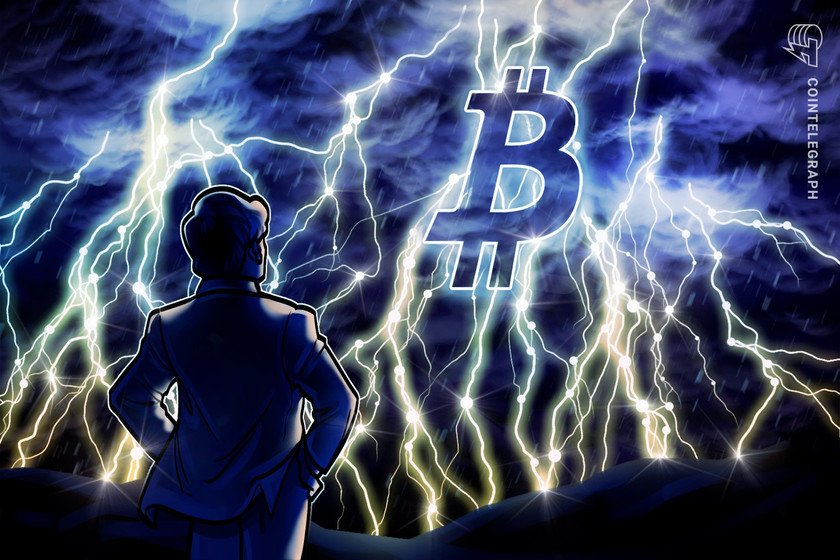MicroStrategy’s Saylor fuses work email address with Bitcoin Lightning


Fans of the Bitcoin bull have been transferring him 21 Satoshis as a way to test out the feature.
The Bitcoin (BTC) Lightning Network has integrated into the corporate email address of Michael Saylor, a Bitcoin bull and co-founder of business intelligence software firm MicroStrategy.
In an April 17 tweet, the former chief executive of the firm shared a screenshot with his 3 million Twitter followers of a few transactions sent to “saylor@microstrategy.com” from others in the form of Satoshis or “Sats” — the smallest denomination of Bitcoin.
So @MicroStrategy converted my corporate email address into a #Lightning⚡️ address and people keep sending me 21 sats… pic.twitter.com/FHde6RtA6N
— Michael Saylor⚡️ (@saylor) April 17, 2023
MicroStrategy’s integration is enabled by the Lightning Address protocol, which allows users to link an “Internet Identifier” like an email address rather than having to copy wallet addresses or use QR codes.
It is unclear if MicroStrategy integrated the feature into all corporate emails at the firm.
The Lightning Network is a popular Bitcoin layer 2 scaling solution, capable of processing 1 million transactions per second (TPS) for a base fee of 1 Satoshi, or around four cents.
Integrating payment systems and upgrading business models based on #Bitcoin & #Lightning⚡️ is a great way to reduce dependence on Big Tech, Big Banking, and Big Advertising. Lightning is an open, ethical, scalable way to move money everywhere on earth, without gatekeepers.
— Michael Saylor⚡️ (@saylor) November 29, 2022
Saylor, who now serves as executive chairman at the firm, has been the mastermind behind MicroStrategy’s Bitcoin investment strategy, whaims to strengthen the firm’s balance sheet.
Related: Coinbase CEO says Bitcoin Lightning is ‘something we’ll integrate’
MicroStrategy has spent $4.17 billion to accumulate 140,000 BTC since the company began buying in March 2021. The firm’s average purchase price is $29,800, according to data from Buy Bitcoin Worldwide.
With the price of Bitcoin currently sitting at $29,400, MicroStrategy is down a mere 1.3% on its total investment.
However, the firm was in the green again for a short period of time last week when Bitcoin broke through the $30,000 mark.
Cointelegraph contacted MicroStrategy for comment on its plans to integrate the Lightning Network in more of its corporate email addresses but did not receive an immediate response.
Magazine: Bitcoin in Senegal: Why is this African country using BTC?























